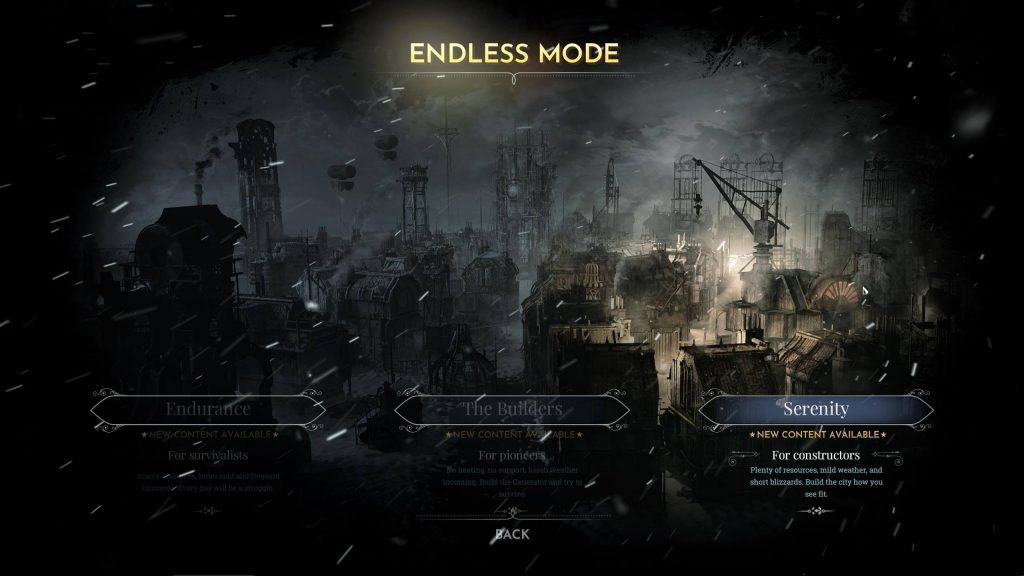Use the Right Pace When Explaining How Your Game Works
When introducing new elements to players, it is important not to present too much information at once. Begin with the simple concepts and gradually transition to more complex ones. This approach helps prevent players from feeling overwhelmed while ensuring that the game still offers a suitable level of challenge. A highly effective technique for controlling the amount of information players need to absorb is to implement a mechanism that gradually unlocks new gameplay options over time.
In Stronghold Crusader 2, players can choose to begin one of three learning campaigns. For each campaign, upon completing a mission, the game unlocks a subsequent mission in which players are introduced to additional gameplay mechanics.
Credit: Firefly Studios. Footage captured by the author.
Explain What Is Relevant
Only present players with information that is immediately relevant or will soon become necessary for their progression. Avoid explaining features or mechanics that cannot be used right away.
Example:
Imagine a fighting game in which new options are introduced, such as advanced attacks and evasive maneuvers, along with explanations of how to execute them. However, if players are informed that they will not be able to use these features until much later in the game, they may feel disappointed or frustrated. Additionally, they are likely to forget the instructions by the time those features become available.
Balance the Difficulty Curve
To maintain player interest and provide continuous motivation, it is advisable to introduce new gameplay elements—such as mechanics or control options—gradually throughout the course of the game, particularly during the unfolding of the game’s story.
Example:
In a strategy game campaign, each new mission can introduce players to new units, abilities, and tactics.
As players progress, the game’s difficulty may change. This progression can be represented by a difficulty curve, which reflects how much information players must absorb at a given stage in order to advance. This information may include:
Game mechanics.
Controls.
Heads-up display information.
Audio feedback.
Haptic responses.
Tactics.
Generally, the game’s difficulty should neither increase too rapidly nor progress too slowly over time.
A steep difficulty curve is one in which players must quickly learn a large volume of information in order to advance.
The figure above illustrates a steep difficulty curve. Such a curve indicates that players are required to understand how the game works in a very short span of time. This can lead to frustration, as the game may become challenging too quickly for many players. Consequently, players might lose their motivation to continue playing.
Playtesting sessions are essential to evaluating how difficult it is for players to understand the game’s mechanics. If you observe that many players struggle to process too much information at once, consider slowing down the instructional pace. Give players additional time to absorb new gameplay elements, controls, and other relevant aspects. Conversely, if your testing reveals that players enjoy learning multiple mechanics simultaneously, you might reduce the number of controls they need to learn—such as by limiting the number of keyboard shortcuts.
Following such an adjustment, the difficulty curve may resemble the next image.
An example of a balanced difficulty curve.
However, if players are taught too slowly, they may become bored due to the lack of challenge or stimulation.
An example of a shallow difficulty curve.
For more detailed guidance on difficulty curves, refer to the section Increase the difficulty over time.
Let Players Learn Peacefully
When learning new gameplay elements, players typically prefer to do so in a highly controlled environment. Whether this environment takes the form of a dedicated training level or a mission that is part of the main story, it is essential that players find the experience enjoyable and are not merely waiting for the tutorial to end. Consider the following examples of effective controlled environments:
Example: An action game that introduces mechanics through a main story level
When players first encounter enemies, they have a relatively high chance of success. These early opponents are few in number, not too powerful, and not excessively resistant to attacks. The game ensures that the encounters are consistent, so that enemies appear in the same locations, possess the same equipment, and employ the same tactics each time, allowing players to repeatedly practice the segment if desired.
Example: Call of Duty 4 that uses a training level
In this game, the shooting range serves as an ideal environment for players to practice using firearms without the risk of character death, thereby facilitating stress-free learning. To maintain a high level of engagement within this level, player performance is evaluated based on the time taken to complete the shooting range and their shooting accuracy.
In Sniper Elite 4, players have the opportunity to practice their shooting skills across various dedicated shooting ranges. These include a rifle range, a pistol range, and a secondary weapon range.
Credit: Rebellion Developments. Footage captured by the author.
Example: World in Conflict that employs a training mission
During the training session, players are also introduced to additional gameplay features, including the functionality of tactical aid. As players do not command any ground units at this stage, they are free to experiment with various off-map artillery and air strikes on ground targets. This enables them to understand how different weapon systems function and behave under different conditions.
In Frostpunk, selecting the Endless Mode: Serenity scenario allows players to explore and understand the game’s mechanics in a low-difficulty setting.
Credit: 11 bit studios S.A.. Screenshot captured by the author.
If your game includes an in-game editor, encourage players to use it to create their own scenarios. Such an editor provides a self-directed and controlled learning environment where players can engage with game elements at their own pace.




